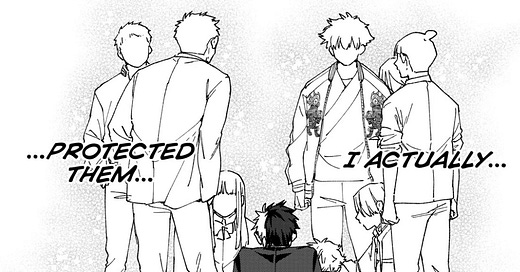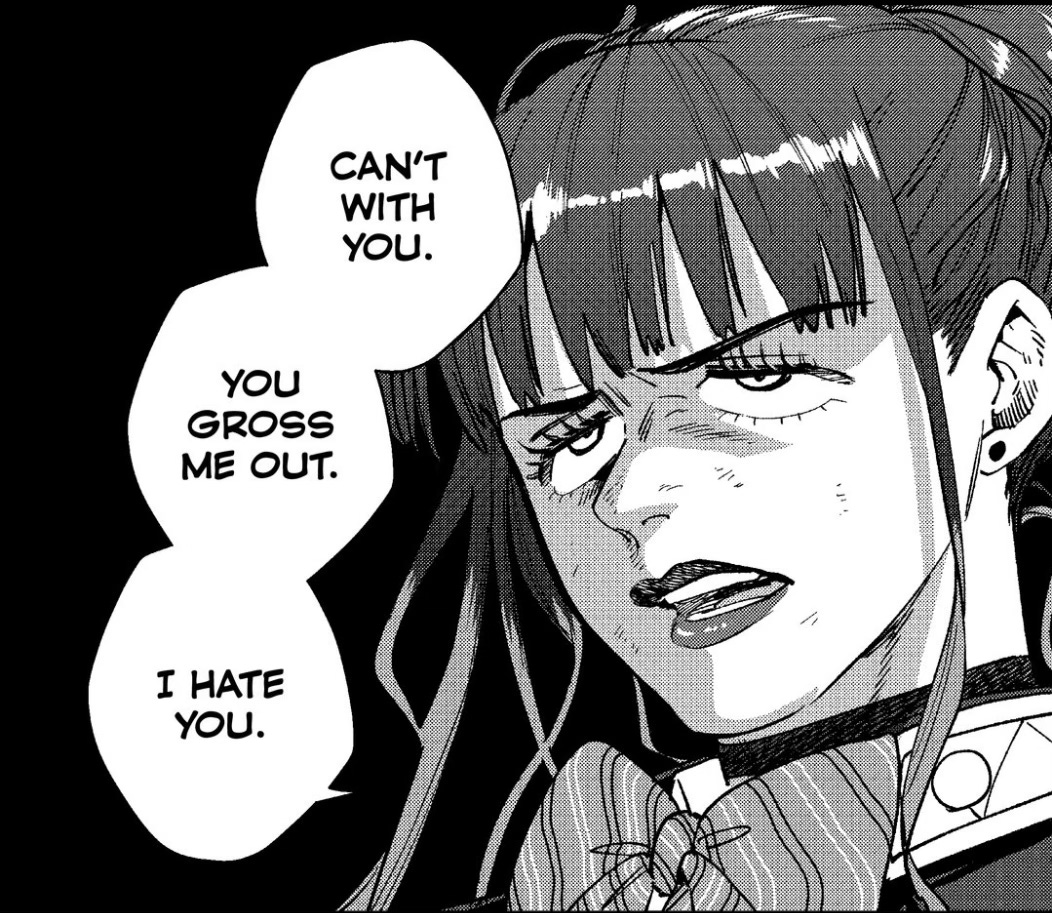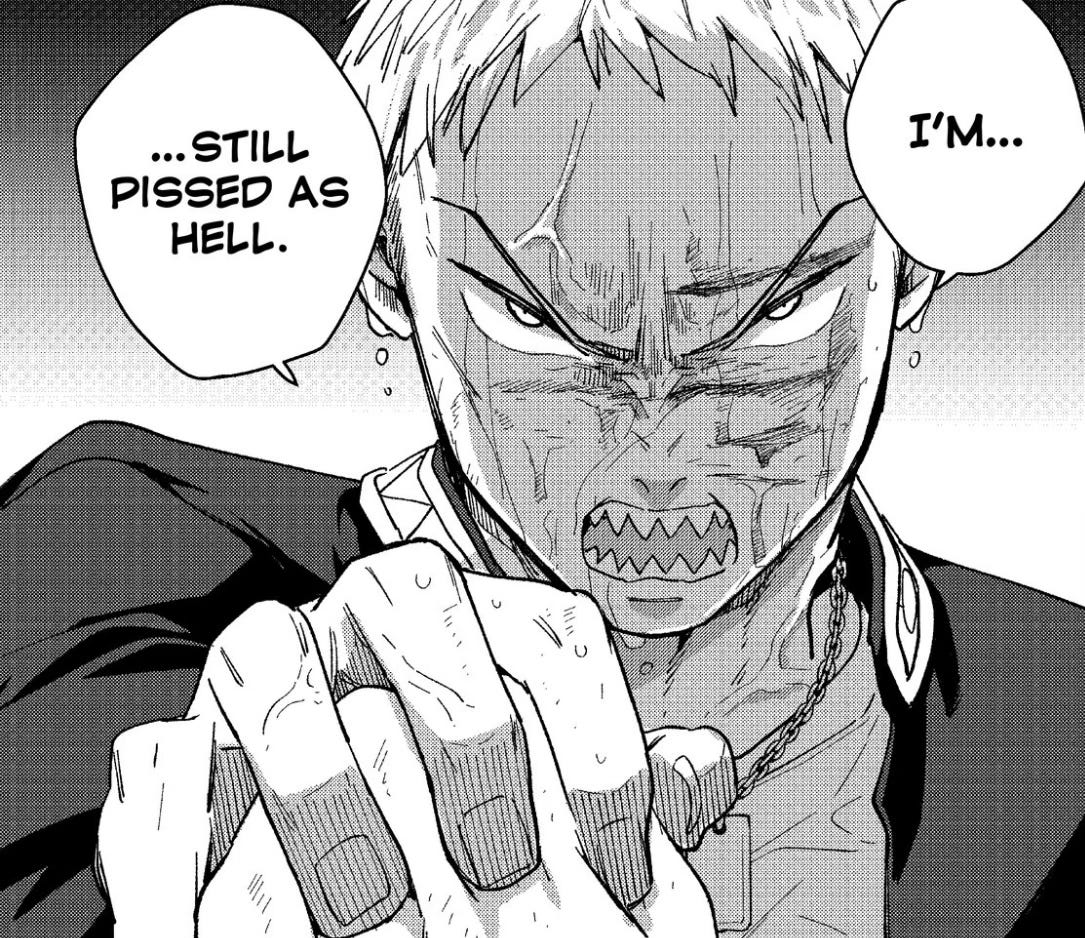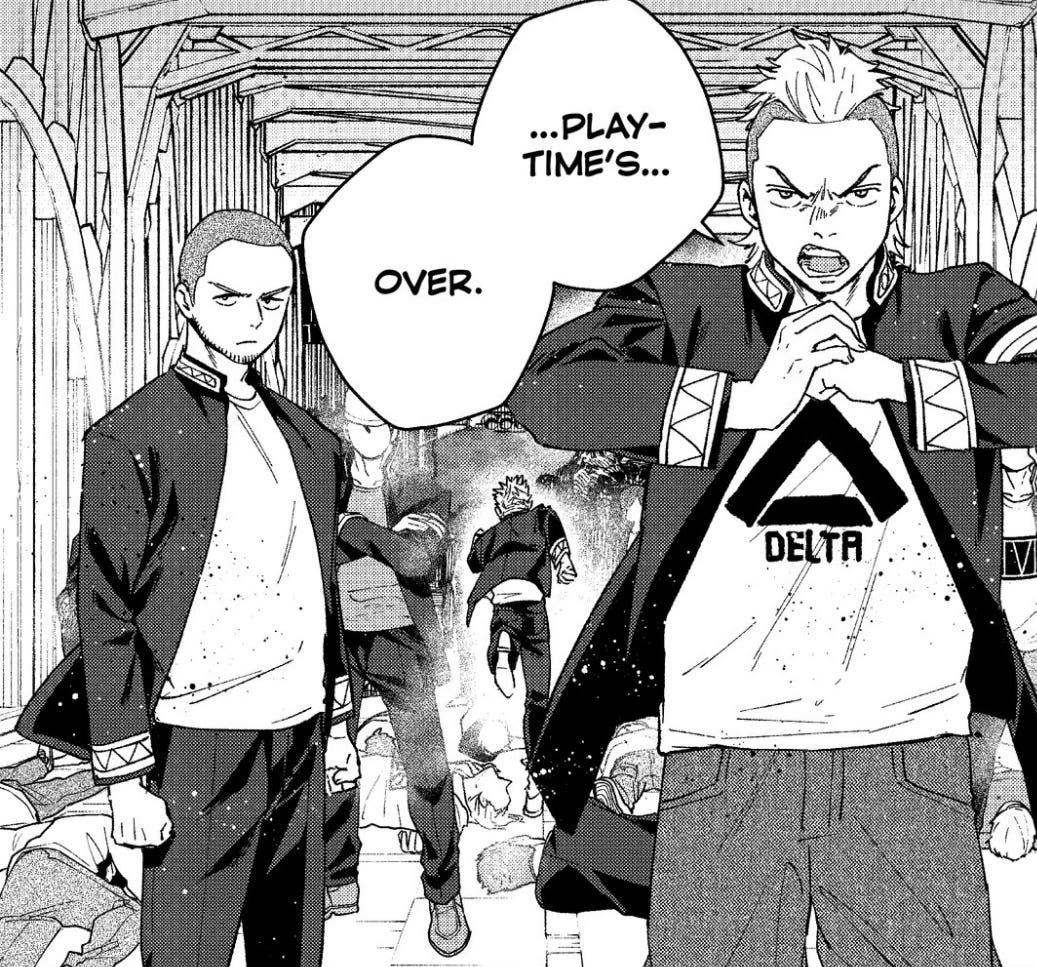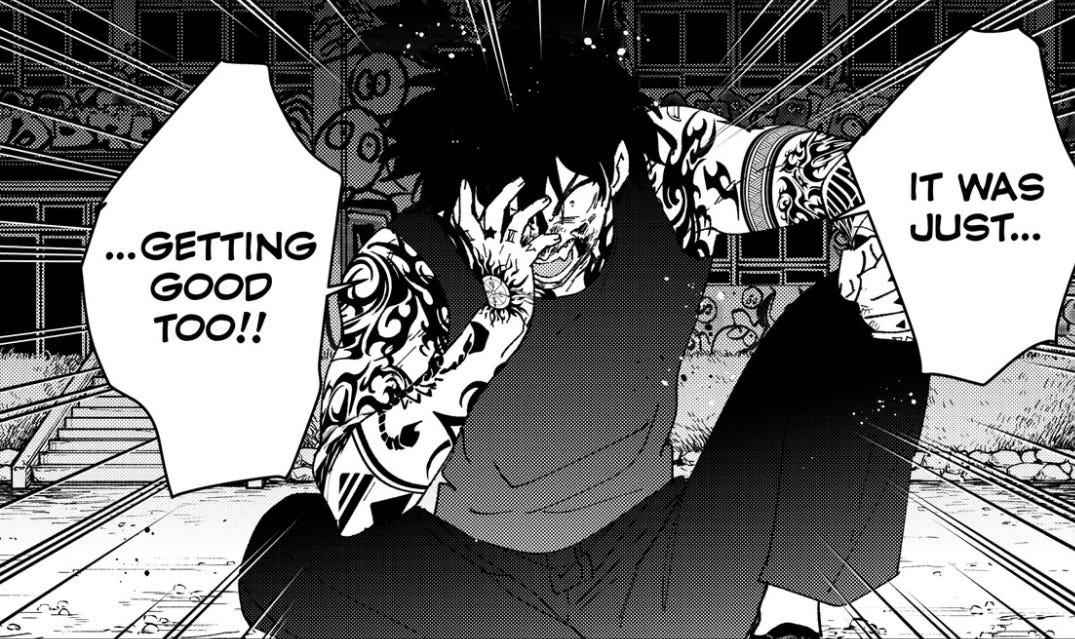Wind Breaker: The What's and the Why's
One we always see, one we sometimes don't. Both matter.
Preface!
I’ve said this many times, but Wind Breaker, more than any other series, is so easy to return to. Like an old friend, as I always say. I can always jump right in and know exactly where we left off.
Part of the reason why is, despite it being such a stalwart series, it is relatively simple. Furin, a school of delinquents, fights other gangs to protect their town. That’s really it. That’s the ‘what’ of Wind Breaker. There’s no magic, no time travel, no treachery. It is very straightforward.
But that’s where it settles into its own brilliance. In that simplicity, they don’t go bigger with the ‘what.’ They go all in on the ‘why.’ And if you read the title of this piece, you should know that this is the point where I end the preface.
Preface over.
Here’s a not-so-secret. Everyone has an external want. To get a better job, to make more money, to settle down and have kids. But that external want is fueled by an internal why. In shorthand, I call it the what and the why. Really original, I know.
Boromir, from The Lord of the Rings, for instance, he wants the ring. That’s the what. Why does he want it though? Because he knows that Gondor is failing, and he needs something to turn the tide.
Draco Malfoy wants to kill Dumbledore, right? That’s the what. Why does he want it though? To validate his presence at Voldemort’s table and, by extension, add more value to the Malfoy name.
These what’s and why’s align. It’s convenient. One leads to the other. The fuel leads to the action. But what happens when the fuel doesn’t immediately lead to the action?
That’s where Wind Breaker comes into it.
Before we get into Wind Breaker, here’s what you need to know.
Sakura, a delinquent high schooler, arrives at Furin high school to become the best fighter. Furin has a reputation as the best fighters in the land, after all. But what he finds is a community of support and friendship, even if they are still some of the fiercest fighters around. But Sakura can’t connect the two—being the best fighter, while also accepting that he’s no longer alone.
And that’s all you need to know.
This notion of distinguishing between the what and the why of Wind Breaker really set in during and after the battle with Keel. Here is all of the first year Furin students and a select batch of second years, and they’ve just defeated Keel, a brutal and cruel rival gang of students.
The external goal is achieved. They fought the battle, they won.
But there are three different internal battles that come out over the course of the battle and his aftermath. The first internal battle is from Kaji, leader of the second years. And I start with this one because it does find a resolution by the end, because we’re almost retroactively looking at the internal goal and how it butts heads with the external.
Kaji, in his battle with the Keel leader, is being coaxed to let his animal self out. To be cruel and brutal like Keel. Keel even wants him to join their side, because the leader sees in him the same animal that exists in Keel.
Cue the internal battle. Now we know that Kaji has an animal inside of him. Conceivably, that puts the external goal at risk. The external goal being to defeat the leader of Keel. But in doing so, will he lose the internal battle of keeping his “animal” caged up?
This one sees an easy resolution. When Kaji is about to deliver a potentially fatal final blow, he holds himself back. Just like that, the internal battle is won, but only after the external battle is won. It gives readers something else to root for, to get nervous about, to feel attached to.
Another internal battle—Nirei, who is the “runt” of Furin, if you will. He’s not a fighter, and that makes him feel worthless. He finds other ways to make himself useful, but in the context of this battle, the big external goal of Furin winning essentially has nothing to do with Nirei’s internal battle to apply himself and be useful.
He doesn’t find a resolution to this internal battle. He isn’t useful in the battle. He actually gets knocked out pretty early. So while the external battle is won, the internal battle resumes, unresolved. Something else for readers to attach to.
Lastly, my man Sakura. Permanently in a duel with Gabimaru from Hell’s Paradise for my favorite protagonist. Sakura’s internal battle is a constant source of tension because he is the most obvious to read when the external doesn’t match the internal. He was instrumental in winning the external battle against Keel. But internally, he blames himself that his crew got hurt, and that he couldn’t do it all on his own.
But in the aftermath of the battle, Furin’s elites tell Sakura that this reaction is because he cares about his friends. Now, it must be noted that Sakura has always been alone. That’s his internal battle. He is alone, he has only ever felt alone, so accepting that others care about him, and he cares about others, is the ongoing internal conflict.
He passes a major checkpoint in his internal battle following the Keel conflict. He begrudgingly accepts that he has friends.
This isn’t the end of Wind Breaker’s internal conflicts. Sugishita has a constant internal conflict regarding his rivalry with Sakura. Tsubakino has internal conflicts with expressing their identity. And what’s so great—and so real—about these internal conflicts is they don’t all begin at the start of Wind Breaker. Tsubakino is at the end of their conflict. Sakura is in the middle. Sugishita is at the beginning.
I want to pull Boromir and Draco Malfoy back into this, because I wasn’t entirely honest about them earlier. Their what’s and why’s are not so straightforward. Sure, Boromir wants the ring at first, but as he connects more with the fellowship and the proper King of Gondor, his why—to protect Gondor—begins to prop up a new what—Aragorn, the invisible badass king-to-be. His attempts to force his ‘why’ lead to inaccurate ‘what’s.’
The same goes with Draco Malfoy, but with a new twist. His ‘why’—to be validated at Voldemort’s table—pushed his ‘what’—killing Dumbledore—but when it really came down to it, he found that his ‘why’ wasn’t what he thought it was, and his ‘what’ crumbled because of it.
And the thing about both Boromir and Draco is, if you take their original ‘what’—to get the ring and to kill Dumbledore—it’s pretty bad in isolation. It’s the ‘why’ that makes them compelling characters. And sympathetic, if you ask me.
That’s where we come back to Sakura. He uses fighting to try to patch up his ‘why.’ He thinks he will find validation for his life by being the fiercest fighter around. By being able to beat up anyone and to be feared by all. But that’s not going to do it. Had he gone down that route, he would have become bitter, because his ‘why’ isn’t to be the most powerful, his ‘why,’ as he is learning throughout Wind Breaker, is to be accepted. To find a community. To finally feel and understand love and care.
But he can’t achieve that goal until he accepts it as his ‘why.’ Which is where his source of frustration comes from. Since he can’t be honest with himself about his ‘why,’ his ‘what’ will never feel fulfilling. And that’s frustrating. I mean, I totally relate. I may not always be honest with myself about my ‘why,’ and that makes my ‘what’s,’ even when they can be marked as “achievements” feel unfulfilling.
So often in manga, we only see the ‘what.’
Luffy wants to be the No. 1 pirate. But why?
Goku wants to be super strong. But why?
I’d never dare slight the tremendous storytelling prowess of One Piece or Dragon Ball, but they are powered by the what. And that’s okay. No one is going to Goku for deep feelings.
Wind Breaker hits both facets so well though. They are powered by the ‘what,’ but the ‘why’ powers the what. It’s a chain reaction. And it’s just plain brilliant.
Previously on MangaCraft!
One Great Panel: Wind Breaker
As you will come to find out when my bigger post about Wind Breaker goes live in, like, three days, this series has won me over in a way that few others have. It’s unexpected, fun, meaningful and packed with exciting characters. Most of all though, the lead character, Sakura, is a cut above traditional protagonists, and this panel we’re looking at is hi…

